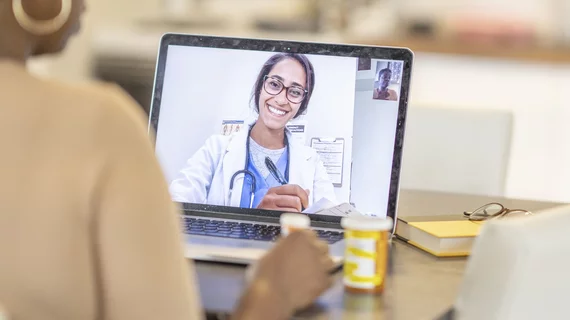AMA pushes for equity in telehealth
In an effort to bridge divides in access to telehealth services, the American Medical Association has approved a new policy aimed at helping underserved communities and populations.
The new policy, which ensures “that minority communities, individuals residing in underserved rural and urban areas, older adults, and individuals with disabilities can reap the benefits and promise of telehealth,” was approved at a special meeting of the AMA House of Delegates, in which physicians, residents and medical students adopted it. The organization will promote initiatives to strengthen digital literacy, with an emphasis on programs designed with and for historically minoritized and marginalized populations.
“It is essential for physicians to serve as leading partners in efforts to improve access to telehealth services in historically marginalized and minoritized communities,” said David H. Aizuss, MD, a member of the AMA Board of Trustees. “More of our patients used telehealth during the COVID-19 pandemic, and we should take advantage of this opportunity to ensure all our patients are able to benefit from being able to access and use telehealth services—regardless of their background or geographic location.”
The new policy comes after telehealth usage has soared since March 2020, when the COVID-19 pandemic prompted lockdown measures that deterred people away from physicians’ offices. However, with greater adoption, cracks in access to the technology have emerged. The AMA believes telehealth needs to be designed in consideration with culture, language, accessibility and digital literacy.
Equity-centric design and implementation are desperately needed, the AMA noted, but part of the issue is infrastructure. For example, a larger percentage of Black and Latinx individuals do not have internet access at home, while people living in rural areas are less likely to have internet than those in urban areas.
The new policy asks AMA calls for expanding physician practice eligibility to help purchase telehealth services and equipment. Additionally, efforts must be made to make telehealth available to everyone and better enable those with more technology difficulties, such as seniors, vision-impaired patients and individuals with disabilities.
“So many people have been stuck on the sidelines as telehealth has grown during the COVID-19 pandemic,” Aizuss said. “We must make sure they are not left behind as telehealth moves forward. We must recognize that broadband internet access is a social determinant of health.”
Related Telehealth Content:
Patient demand for telemedicine remains strong
Telehealth claims surged in 2020
Walmart acquires telehealth provider MeMD
Google takes $100M plunge into telehealth
Telehealth demand starts to soften
More than 200 advocates call on governors to retain telehealth flexibilities
HHS awards $55 million to expand virtual healthcare access

